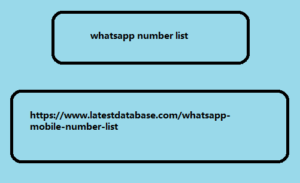If you are at the beginning of your career as a or are part of a PM team, you have certainly come across backlogs in which nothing seems very clear. The multitude of tasks makes it difficult to visualize what is a priority and how to structure tasks. It is precisely because of this difficulty that the user story mapping technique was created.
Agile processes must also be simple and easy to visualize. Otherwise, teams waste a lot of time and important details about user mapping may be overlooked.
Good will be of no use if the information is complex, tedious and difficult to access when it reaches the PM team.
In this post, our mission is to show that you can do everything differently and more simply with the help of user story mapping . Read on to understand what it is, how it works and the reasons to adopt it.
User story mapping User Story Mapping what is it?
User story mapping is a mapping technique that aims to show information from the in an uncomplicated and visually accessible way. In short, all requests are represented, at a hierarchical level, by sticky notes on a wall.
Sounds simple, doesn’t it? And, in fact, it really is! This was the idea of the person who created the process, Jeff Patton, one of the User Story Mapping world’s leading experts in agile processes. In fact, you can learn a little more from him through “User Story Mapping: Discover the Whole Story, Build the Right Product”, as well as where he talks more about the method and his ideas.
What motivated Jeff to create this change in approach was precisely the high complexity of the old methods. Product teams need dynamism and quick access to the information needed for product development.
If all perceptions about user requirements are on a wall where everything is categorized and written in short sentences, visualization becomes agile and clear.
Without this method, teams would be dependent on long, highly in-depth and detailed documentation about UX requests. The problem is that this takes time and requires a lot of energy to absorb all the information. With story maps, you gain in objectivity, communication, understanding and work dynamics. In addition, of course, assertiveness in product delivery.
All of your personal information will be sent to you, along with a list of your exact WhatsApp numbers. an inventory of every phone number on whatsapp number list WhatsApp. You can utilize to advertise the goods that your company sells. WhatsApp number For marketing purposes, the list of WhatsApp mobile numbers is helpful. You’re right and you’re in control.You will receive all information regarding the WhatsApp mobile list number.
Levels of a story map
Story maps become really relevant because, in addition to supporting the visualization of all requirements, they also help to prioritize tasks in the backlog . This is done through levels, which you understand better how they work and how they direct the work to follow.
Activities
We can define activities as the main User Story Mapping actions that users want to perform. For example, if they access a delivery app iran email library this activity would be ordering a meal or, if we are talking about transportation apps, it would be ordering a car.
As you can see in the example image from Norman Nielsen Group, these high-level activities head story maps. In the product in question, all activities need to be listed in parallel, one next to the other. This helps maintain a hierarchical structure bold data regardless of the number of high-level actions.
As main actions, we can view this first category as central objectives, but which require steps to be achieved, which is what we will see next.
Steps
Just below the activities come the steps, which depict the stages of smaller actions required to reach the main action desired by users. These subtasks will make up a journey of activities until completing main objectives within digital products of the most varied types.
If the idea is to request a car (main activity), the necessary steps for this are to enter the origin, that is, where you are now, and the destination, which is where you want to go. Steps, generally, do not extend that much, since they are only what comes before the activity.
Finally, the last level of story maps is the details. In practice, these are all the small actions needed to reach the last step and then carry out the desired main activities. These are several interactions with less impact, but they are recurring and must be considered to build a perfect user journey.
Here, it is necessary to think about the experience from the very first moment . For example, after opening any app, users will need to click on login buttons, enter their credentials and password and then click confirm.
Benefits of mapping user stories
Mapping this journey of user interactions is essential for processes . There are important gains at various points in the development work. Therefore, we will highlight some of the main ones below. Follow along!
Optimized team collaboration and alignment
Having a properly detailed user story on post-it boards is an effective way to put processes in a broad view for entire teams. This way, quality ideas can be discussed simultaneously. In addition, people on the PM team can collaborate better with each other and align actions, since the view is unique.
Backlogs with simpler visualization
Backlogs in complex and large documents simply do not suit agile teams. User story mapping can be considered the ideal solution to put these backlogs in an open, accessible and simplified way for each person on the team. Structuring them into categories and actions and breaking them down using sticky notes works very well!
Easy visualization of priorities and Minimum Viable Product (MVP)
It is essential to think about the essential features, that is, visualizing them in a simple way is necessary. User story mapping helps a lot with this, in addition to also facilitating the identification of an MVP . This way, development time is optimized and products can be ready for testing uses, being minimally functional.
Identification of risk elements made easier
Good ideas don’t always turn into working products. Sometimes, features and action steps don’t help build the perfect experience. The great thing about using story maps is that these risky elements can be easily identified on the boards. Once this happens, you can simply replace the actions.
User Story Map and Customer Journey Map
The terms may refer to the same questions, but the truth is that they are different. Are consumers and users the same? Yes, but the issue is the perspective from which the activities are analyzed. They are two different phases, which makes all the difference.
map is an analysis designed to understand the path a person takes when interacting with a given product. The idea is to evaluate the journey to perform various actions and achieve goals. Issues such as the intentions, desires and feelings of these people during this journey are considered.
When we talk about a user story map, the perspective is to analyze the product and how it should work to deliver the perfect experience. Then, paths are designed to build sequences of functionalities that generate interactions that are simple to understand. This way, users can make better use of products.
The relationship between these two concepts is simple: consumer journey maps serve as a basis for creating user story maps. This is possible because it is necessary to first understand the intentions of those who use products and only then develop interaction experiences that perfectly meet people’s desires.
How to make a user story map step by step
Time to put these ideas into practice! Creating a user story mapping structure from scratch is important to know how to use the tool. That’s what we’ll show you how to do next. Here are the five steps.
1. Choose the tool to organize the map
Building the map is an important part of the process, but it also requires effort, we cannot deny. Structuring the actions and their developments requires analysis and, only then, the act of listing each step of the users. Doing this without the help ofcan make the work more complex, time-consuming and prone to errors.
s one of the main solution options for this task, precisely because it offers a very simple to operate whiteboard structure. From there, you can create story maps in a clear way.
is another good option that should be considered. The tool, well-known among PM teams, is a task management platform for agile teams, which also allows you to structure actions in easy-to-understand screens.
2. Work together with the team
First and foremost, user story mapping is a collaborative tool . Entire teams have access to the boards and can view backlog tasks and requests simultaneously. Naturally, for this work structure to be built, it is important that the entire team is willing to build story mappings.
Insights from the analysis of the consumer journey map can be scored by several people. This will create a broader view of the situation and generate different requests. Although it may seem like a lot of information, all it takes is a refinement of these questions, which will make the mapping leaner.
Teamwork also brings different perceptions, that is, people in different occupations can apply requirements based on experience and qualifications. From there, it is easier to have accurate MVPs with the potential to become good products.
3. Make a visually organized map
The great highlight of this technique is the visualization of tasks. The more accessible they are at first glance, the better the work of development teams will be. The idea of post-its is applied to ensure that all issues are seen in a simplified view, with hierarchical breakdowns.
Therefore, it is important to strictly follow the story map levels. This way, team members will know what the main actions are and which of them are part of the journey to achieving the objectives. Therefore, positioning hierarchically allows for almost immediate understanding.
To further optimize this understanding, using post-its in different colors is a specific suggestion that will have a great effect. For each level, a contrasting shade. This way, it is possible to separate the categories and make understanding and analyzing the backlog more agile.
4. Consider the user’s point of view, not the product’s
Creating a user story map requires focusing on people’s experience with the product. If you want to know what the main objectives are and the steps that are part of it, think first about each user’s journey.
From the moment the user accesses an interface until they achieve their main activity, i.e., their objective, they will go through several stages. The idea is to visualize this cycle of actions properly, putting themselves in the shoes of the person who will use the product. This is the best way to build an experience that works well and is dynamic.
One mistake that affects quality development is thinking about product development focusing only on its interface and functionality. If this activity does not start with the person who will use it, it is not possible to create a quality experience for users.
5. Make adjustments if necessary
Want to start your career as a product manager? Tera is a digital school where experts bring market experience to train new people for the market. Learn more about




